Jony Ive
description: a British designer known for his work as the Chief Design Officer of Apple Inc.
51 results
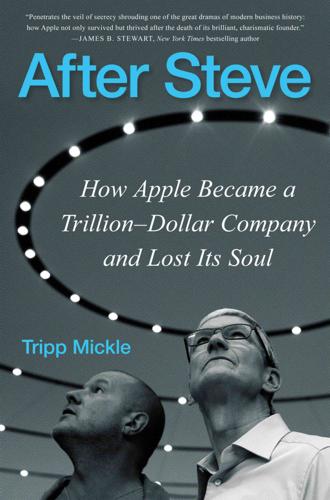
After Steve: How Apple Became a Trillion-Dollar Company and Lost Its Soul
by
Tripp Mickle
Published 2 May 2022
“What am I going to do”: Tripp Mickle, “Jony Ive Is Leaving Apple, but His Departure Started Long Ago,” Wall Street Journal, June 30, 2019, https://www.wsj.com/articles/jony-ive-is-departing-apple-but-he-started-leaving-years-ago-11561943376?mod=article_relatedinline. Ive and Newson were: Alice Morby, “Jony Ive and Marc Newson Create Room-Size Interpretation of a Christmas Tree,” Dezeen, November 21, 2016, https://www.dezeen.com/2016/11/21/jony-ive-marc-newson-immersive-christmas-tree-claridges-hotel-london/; Jessica Klingelfuss, “First Look at Sir Jony Ive and Marc Newson’s Immersive Festive Installation for Claridge’s,” Wallpaper, November 19, 2016, https://www.wallpaper.com/design/first-look-jony-ive-marc-newson-festive-installation-claridges.
…
The company monitors: Apple Inc v. Gerard Williams III, Williams Cross-Complaint Against Apple Inc., Superior Court of the State of California, County of Santa Clara, November 6, 2019. In late 2017, he flew: “Jony Ive: The Future of Design,” November 29, 2017, https://hirshhorn.si.edu/event/jony-ive-future-design/; fuste, “Jony Ive: The Future of Design” (audio recording), Soundcloud, 2018, https://soundcloud.com/user-175082292/jony-ive-the-future-of-design. Over the next few weeks: “Apple Park: Transcript of 911 Calls About Injuries from Walking into Glass,” San Francisco Chronicle, March 2, 2018, https://www.sfchronicle.com/business/article/Apple-Park-Transcript-of-911-calls-about-12723602.php.
…
Then someone inside: Aaron Tilley and Wayne May, “Before Departure, Apple’s Jony Ive Faded from View,” The Information, June 27, 2019, https://www.theinformation.com/articles/before-departure-apples-jony-ive-faded-from-view. The invitations arrived: Copy of the invitation. In a message to staff: Lewis Wallace, “How (and Why) Jony Ive Built the Mysterious Rainbow Apple Stage,” Cult of Mac, May 9, 2019, https://www.cultofmac.com/624572/apple-stage-rainbow/. Ive was excited about: Interview with Camille Crawford, former personal assistant to Jony Ive. Over the years: Interview with John Cave, longtime friend of Mike Ive and colleague at Middlesex Polytechnic.
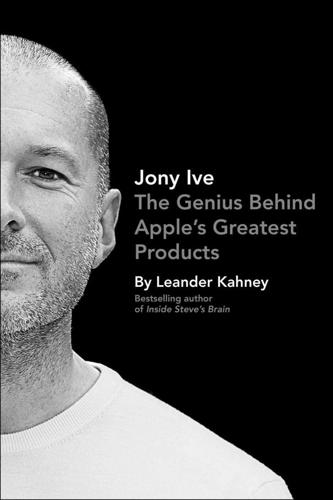
Jony Ive: The Genius Behind Apple's Greatest Products
by
Leander Kahney
Published 14 Nov 2013
So the British design school/art school vibe informs how Jony Ive interacts with service design, multimedia aspects, the packaging [and] the publicity.”10 Culture and history have a place in the mix of art and craft to which Jony Ive was exposed in the 1980s. At the time, the nation transformed itself from a semisocialist state with strong trade unions into a fully capitalist one on Reagan’s model. There was a lot of youth revolt. Young Brits embraced punk, which encouraged experimentation, unconventionality and daring. It’s possible to read some of that independence into Jony Ive’s later approach. “In America, on the other hand,” Milton explained, “designers are very much serving what industry wants.
…
If their commitment to their global workforce and to environmental concerns remains less certain, it’s clear that Jony Ive will have a voice in shaping those policies into the foreseeable future. CHAPTER 13 Apple’s MVP [Jony Ive] has more operational power than anyone else at Apple except me. There’s no one who can tell him what to do, or to butt out. That’s the way I set it up. —STEVE JOBS Steve Jobs had surgery for a pancreatic tumor in July 2004. As he was recovering from his first bout with cancer, he asked to see two people. One was his wife, Laurene Powell Jobs; the other was Jony Ive. After nearly eight years of working together almost daily, Jony and Jobs had a special and intimate relationship.
…
Those were the terms we used to keep him at Apple—and also that henceforth, design was going to be really valued at the company.”40 Rubinstein’s promise would be fulfilled. The era during which it took three years to get products out the door did end; in the coming years, the rate at which new products and new ideas were adopted—many of them from Jony Ive’s fertile brain—would be nothing less than remarkable. CHAPTER 5 Jobs Returns to Apple The thing is, it’s very easy to be different, but very difficult to be better. —JONY IVE On the morning of July 9, 1997, several dozen members of Apple’s top staff were summoned to an early-morning meeting. In an auditorium at company HQ, Gilbert Amelio, who’d been Apple’s CEO for approximately eighteen months, shuffled onto the stage.
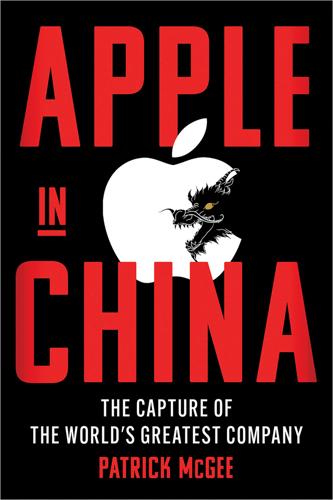
Apple in China: The Capture of the World's Greatest Company
by
Patrick McGee
Published 13 May 2025
“We must rekindle the feeling that Apple is on the move. The ads are not about selling product, because it is the company [that] needs selling now.” A few days later, Jobs decided to visit the Industrial Design studio, where a team of artists led by Jony Ive were working on Apple’s next products. A Matterhorn of Products In a twisted, comical sort of way, Steve Jobs and Jony Ive were on the same wavelength the first time they met one-on-one. As Jobs left Apple’s main campus and crossed the road to visit the ID studio in mid-August 1997, he intended to fire Apple’s lead designer. Prior to Ive welcoming Jobs, the thirty-year-old British designer laid out brochures demonstrating the breadth of the team’s capabilities.
…
Q&A with developers: Steve Jobs, “Complete Apple WWDC | Steve Jobs talk and answer developers questions | 1997,” YouTube, TheAppleFanBoy, uploaded January 28, 2015, https://www.youtube.com/watch?v=yQ16_YxLbB8. Chapter 4: Columbus—A New World of Computing resignation letter already tucked: Ian Parker, “The Shape of Things to Come” (profile of Jony Ive), The New Yorker, February 16, 2015, https://www.newyorker.com/magazine/2015/02/23/shape-things-come. “The products suck!”: Leander Kahney, Jony Ive: The Genius Behind Apple’s Greatest Products. New York: Portfolio, 2013, 101–105. “tight green spandex”: Anonymous, “Apple eMate 300,” ancientelectronics (blog), February 10, 2020, https://ancientelectronics.wordpress.com/2020/02/10/apple-emate-300/.
…
It was uncharacteristic of either engineer to be unimaginative or stubborn, so Novak stealthily crossed the two-lane street from his office in Valley Green Six to the Industrial Design studio—the den of creative designers who’d been empowered by Jobs to think radically about the look and feel of Apple products. Laid out before him was a model of the Columbus prototype, soon to be named iMac. It looked like nothing he or anyone else had built before. “Make it lickable,” Jobs had told Jony Ive. And Ive had delivered. The prototype, machined from a durable cast plastic and painted a bright color, was see-through along the sides and around its exterior, and shaped more like an egg than the boxy, angular form of every computer made before it. Novak eyed the iMac up and down. The plastic casing around the display featured horizontal grooves acting like decorative accent lines.
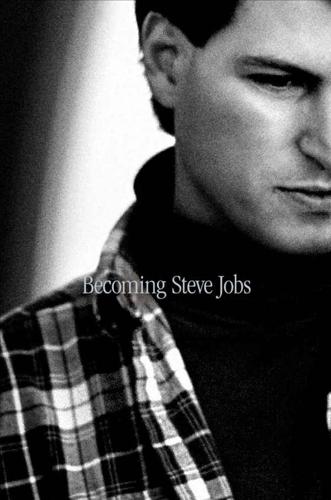
Becoming Steve Jobs: The Evolution of a Reckless Upstart Into a Visionary Leader
by
Brent Schlender
and
Rick Tetzeli
Published 24 Mar 2015
Grove, the former CEO of Intel, was an important behind-the-scenes advisor. When Steve called in 1997 to ask if he should take the job as interim CEO of Apple, Grove growled, “Steve, I don’t give a shit about Apple.” Courtesy of Denise Amantea Steve would lunch three or four times a week with his most important collaborator, Jony Ive. The design chief was on the CEO’s wavelength, and Steve knew from the moment he met Jony that he was “a keeper.” © Art Streiber/AUGUST At the Academy Awards in 2005, the Incredibles gang from Pixar paused for a photo on the red carpet. John Lasseter is front and center, flanked by his wife, Nancy, and Steve’s wife, Laurene.
…
For one thing, he’d been able to move the company out of its financial crisis. More important, in his fifteen months there he had gotten to know all the key players, including a few who felt comfortable complaining to him about Amelio. One of those was Apple’s young design chief, a Brit by the name of Jonathan “Jony” Ive, who felt that he was wasting his talent at Apple. He invited Anderson to come by the industrial design lab, which Amelio had not visited. “There was incredible stuff going on there,” remembers Anderson. “That was a big part of how I had come to worry about Amelio and his lack of leadership.” Anderson knew that he himself was not the answer.
…
Steve ran the new Apple through a remarkably strong, remarkably motivated core group, consisting of Anderson, Cook, Rubinstein, and Tevanian, as well as sales head Mitch Mandich from NeXT; marketing chief Phil Schiller, a former Apple guy whom Steve brought back from Adobe; and Sina Tamaddon, a software guy from NeXT who also engineered several key deals. This group—minus Mandich, who would leave in 2000, and with the eventual addition of design chief Jony Ive—would drive operations at the company well through the mid-2000s. Given Steve’s volatile reputation and track record as a manager, it’s remarkable that they remained together for so many years. Steve didn’t do the kinds of things that leaders often do to cement a strong group. He didn’t take the guys out to dinner.
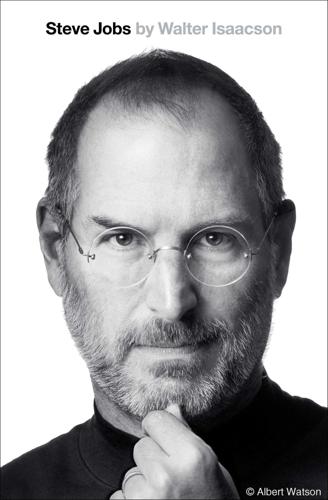
Steve Jobs
by
Walter Isaacson
Published 23 Oct 2011
“That’s the most prized thing we have to give,” he told Bono. The singer said he was ready to try to put the deal back together, so Vincent immediately called Jony Ive, another big U2 fan (he had first seen them in concert in Newcastle in 1983), and described the situation. Then he called Jobs and suggested he send Ive to Dublin to show what the black iPod would look like. Jobs agreed. Vincent called Bono back, and asked if he knew Jony Ive, unaware that they had met before and admired each other. “Know Jony Ive?” Bono laughed. “I love that guy. I drink his bathwater.” “That’s a bit strong,” Vincent replied, “but how about letting him come visit and show how cool your iPod would be?”
…
Deutschman, 248; Steve Jobs, speech at iMac launch event, May 6, 1998; video of Sept. 1997 staff meeting. CHAPTER 26: DESIGN PRINCIPLES Jony Ive: Interviews with Jony Ive, Steve Jobs, Phil Schiller. John Arlidge, “Father of Invention,” Observer (London), Dec. 21, 2003; Peter Burrows, “Who Is Jonathan Ive?” Business Week, Sept. 25, 2006; “Apple’s One-Dollar-a-Year Man,” Fortune, Jan. 24, 2000; Rob Walker, “The Guts of a New Machine,” New York Times, Nov. 30, 2003; Leander Kahney, “Design According to Ive,” Wired.com, June 25, 2003. Inside the Studio: Interview with Jony Ive. U.S. Patent and Trademark Office, online database, patft.uspto.gov; Leander Kahney, “Jobs Awarded Patent for iPhone Packaging,” Cult of Mac, July 22, 2009; Harry McCracken, “Patents of Steve Jobs,” Technologizer.com, May 28, 2009.
…
After two years of staggering losses, Apple had enjoyed a profitable quarter, making $45 million. For the full fiscal year of 1998, it would turn in a $309 million profit. Jobs was back, and so was Apple. CHAPTER TWENTY-SIX DESIGN PRINCIPLES The Studio of Jobs and Ive With Jony Ive and the sunflower iMac, 2002 Jony Ive When Jobs gathered his top management for a pep talk just after he became iCEO in September 1997, sitting in the audience was a sensitive and passionate thirty-year-old Brit who was head of the company’s design team. Jonathan Ive, known to all as Jony, was planning to quit. He was sick of the company’s focus on profit maximization rather than product design.
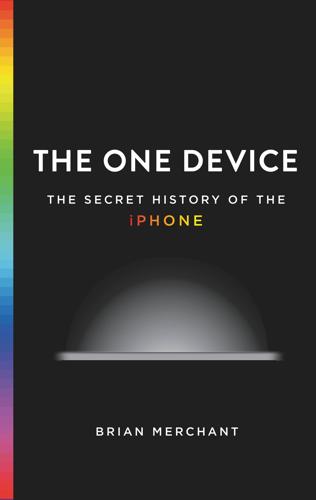
The One Device: The Secret History of the iPhone
by
Brian Merchant
Published 19 Jun 2017
It was getting harder to argue with that logic. The latest batches of MP3 phones were looking increasingly like iPod competitors, and new alternatives for dealing with the carriers were emerging. Meanwhile, Bell had seen Jony Ive’s latest iPod designs, and he had some iPhone-ready models. On November 7, 2004, Bell sent Jobs a late-night email. “Steve, I know you don’t want to do a phone,” he wrote, “but here’s why we should do it: Jony Ive has some really cool designs for future iPods that no one has seen. We ought to take one of those, put some Apple software around it, and make a phone out if ourselves instead of putting our stuff on other people’s phones.”
…
i–iV The first two Apple sections, i and ii, are based primarily on interviews with the team responsible for carving out the interaction paradigms that formed the foundation of the iPhone—the user interface, the multitouch software, the early hardware. I conducted interviews with Bas Ording, Imran Chaudhri, Brian Huppi, Joshua Strickon, and Greg Christie, in addition to other members of the original iPhone team on background. Further details and quotes from Jony Ive were taken from Walter Isaacson’s Steve Jobs, Leander Kahney’s Jony Ive, and Brett Schlender’s Becoming Steve Jobs. Steve Jobs “misremembered” the iPhone’s touchscreen genesis in a Q-and-A hosted by Walt Mossberg and Kara Swisher at their annual D: All Things Digital conference. As with the previous roman numbered sections, most of chapters iii and iV were sourced from interviews with original iPhone team members and anonymous Apple employees, previous research and reportage, and court- and FOIA-obtained documents.
…
Quotes were drawn from the Apple/Samsung trial of 2012, when Phil Schiller and Scott Forstall took the stand. Books that provided extraordinarily useful detail, research, and background were Dogfight, by Fred Vogelstein; Steve Jobs, by Walter Isaacson; Becoming Steve Jobs, by Brent Schlender; Inside Apple, by Adam Lashinsky; and Jony Ive, by Leander Kahney. Quotes attributed to Jony Ive, Steve Jobs, Mike Bell, and Douglas Satzger were drawn from those sources. John Markoff’s New York Times reporting and Steven Levy’s book The Perfect Thing and his work in Newsweek were used for reference. Sales figures cited are provided by Apple unless otherwise stated.

Dogfight: How Apple and Google Went to War and Started a Revolution
by
Fred Vogelstein
Published 12 Nov 2013
“So I argued with Steve for a couple of months and finally sent him an email on November seventh, 2004,” Bell said. “I said, ‘Steve, I know you don’t want to do a phone, but here’s why we should do it: [Design director Jony Ive] has some really cool designs for future iPods that no one has seen. We ought to take one of those, put some Apple software around it, and make a phone out of it ourselves instead of putting our stuff on other people’s phones.’ He calls me back about an hour later and we talk for two hours, and he finally says, ‘Okay, I think we should go do it.’ So Steve and I and Jony [Ive] and Sakoman had lunch three or four days later and kicked off the iPhone project.” It wasn’t just Bell’s persistence and Ive’s designs that helped convince Jobs.
…
Engineers designing the iPhone’s electronics weren’t allowed to see the software it would run. When they needed software to test the electronics, they were given proxy code, not the real thing. If you were working on the software, you used a simulator to test hardware performance. And no one outside Jobs’s inner circle was allowed into chief designer Jony Ive’s wing on the first floor of Building 2. The security surrounding Ive’s prototypes was so tight that employees believed the badge reader called security if you tried to badge in and weren’t authorized. “It was weird, because it wasn’t like you could avoid going by it. It was right off the lobby, behind a big metal door.
…
Even his fans admit that before he left, he had become a cliché of a difficult boss—someone who takes credit for underlings’ good work, but is swift to blame them for his own screwups. When Jobs was alive, Forstall drove colleagues mad with his sanctimonious “Steve wouldn’t like that” critique, and he made no secret of his seeing himself as the eventual Apple CEO. In 2011, Bloomberg Businessweek reported that chief designer Jony Ive and head of technology Bob Mansfield were so suspicious of Forstall they refused to meet with him unless CEO Tim Cook was present too. I’ve heard that was true for iTunes boss Eddy Cue as well. It wasn’t shocking to see Jobs play two executives off against each other; he was well-known for his Machiavellian side.
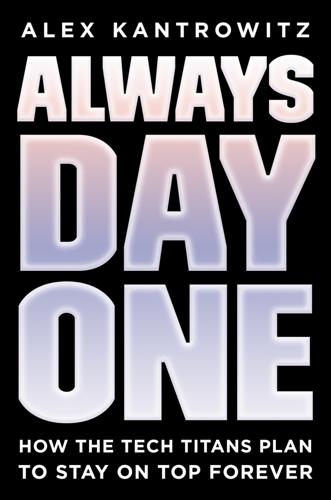
Always Day One: How the Tech Titans Plan to Stay on Top Forever
by
Alex Kantrowitz
Published 6 Apr 2020
“Angela Ahrendts to Leave Apple in April; Deirdre O’Brien Named Senior Vice President of Retail and People.” Daring Fireball (blog). Accessed February 5, 2019. https://daringfireball.net/linked/2019/02/05/ahrendts-obrien. As would Jony Ive: Gruber, John. “Jony Ive Is Leaving Apple.” Daring Fireball (blog), June 27, 2019. https://daringfireball.net/2019/06/jony_ive_leaves_apple. a leaked United Airlines document: Mayo, Benjamin. “United Airlines Takes Down Poster That Revealed Apple Is Its Largest Corporate Spender.” 9to5Mac, January 14, 2019. https://9to5mac.com/2019/01/14/united-airlines-apple-biggest-customer/.
…
Craig Federighi, the capable and smooth senior vice president of engineering. And John Giannandrea, the Scottish ex-Googler who runs machine-learning and AI strategy. Angela Ahrendts, the former Burberry CEO and head of Apple retail, would’ve been among this group had she not stepped down in 2019. As would Jony Ive, Apple’s brilliant and sometimes detached former head of design, who stepped down that year as well. Apple’s designers are the first line of employees tasked with carrying out these executives’ orders. While engineers are royalty inside Amazon, Facebook, and Google, designers are deities inside Apple.
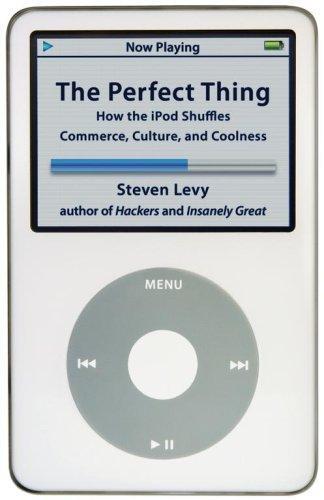
The Perfect Thing: How the iPod Shuffles Commerce, Culture, and Coolness
by
Steven Levy
Published 23 Oct 2006
While Steve Jobs has consistently presented the development of the iPod as a team effort, he has publicly singled out the company's industrial design ninja as the guy responsible for the look and visual integration of the device. This is Jonathan Ive. Known within the company as Jony, Ive has continually made design history and put enough Apple hardware into the Museum of Modern Art's design collection to make MOM A an informal annex of the Apple Store. The iPod represents the apex of the partnership between Ive and Jobs. In some quarters people be- Cool lieve him to be the father of the iPod. (U2 s Bono caUing him "Jony iPod" helped that one along.) That's inaccurate, but it is fair to say that his vision fixed its look. Jony Ive is a burly guy in his late thirties but appears younger. He's bulky under a loose T-shirt, hair shaved a few nanos short of a dome.
…
"Right from the very first time, we were thinking about the product, wed seen this as stainless steel and white," Ive explained. "It is just so ... so brutally simple. It's not just a color. Supposedly neutral—but just an unmistakable, shocking neutral." The Perfect Thing 98 It's almost as if Jony Ive, a London-born industrial artist, were channeling Ishmael, the narrator of Herman Melville's fabled novel. "In many natural objects, whiteness refiningly enhances beauty, as if imparting some special virtue of its own," Melville wrote in Moby-Dick. Ishmael is driven to solve "the incantation of this whiteness," a journey that leads him to ask whether white "by its indefinitiveness . . . shadows forth the heartless voids of immensities of the universe, and thus stabs us from behind with the thought of annihilation, when beholding the white depths of the milky way."
…
I got a glimpse into the star-crossed nature of the relationship between Apple and HP on the very day the companies announced the deal. When I'd asked Fiorina who would decide the color of the, um, hPod, she'd responded instantly, "We do." In fact, she promised that HP would sell a blue iPod, which was quite a departure from the shocking neutrality that Apple's design guru Jony Ive had established as a trademark look for the device. But a few hours after my conversation with Fiorina at the Las Vegas Convention Center, I was on the phone with Steve Jobs. Steve, I asked, does this deal allow HP to determine the color of the iPods it'll sell? "We'll see," he said with the gravity of an executioner.
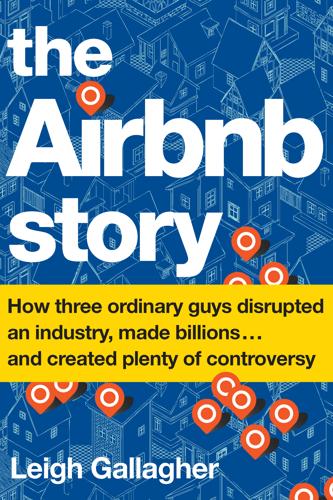
The Airbnb Story: How Three Ordinary Guys Disrupted an Industry, Made Billions...and Created Plenty of Controversy
by
Leigh Gallagher
Published 14 Feb 2017
Once in Los Angeles, Chesky moved in with some friends from RISD and started working at the industrial-design firm 3DID. For the first few months he liked the work, designing real products for companies like ESPN and Mattel. But soon it started to become evident that the job wasn’t what he’d hoped it would be. He dreamed of becoming the next Jony Ive or Yves Béhar, famous designers who’d reimagined companies like Apple and the consumer-technology firm Jawbone, but he found his daily work to be uninspiring, mostly rote execution. “It was not silly stuff, but it was so obviously not in the promise of RISD,” he says. The renowned institution had filled him with a spirit of change-the-world idealism: almost any problem in the world could be solved by creative design, he was told; if you could conceive of something, you could design it; and it was possible to design the very world you wanted to live in.
…
Airbnb’s next investment rounds unlocked access to Silicon Valley icons like Reid Hoffman, Marc Andreessen, and Ben Horowitz, all seen as gurus when it came to the art of building tech companies in Silicon Valley. The more successful Airbnb became, the more top people the founders had access to, and as it began to get bigger, Chesky started seeking out sources for specific areas of study: Apple’s Jony Ive on design, LinkedIn’s Jeff Weiner and Disney’s Bob Iger on management, Facebook’s Mark Zuckerberg on product, and Sheryl Sandberg on international expansion and on the importance of empowering women leaders. John Donahoe of eBay was a particularly important mentor, schooling Chesky on scaling operations, managing a board, and other aspects of being the CEO of a large marketplace business.
…
“By the way, I’m learning from this,” he said, pointing to my notes. “If I wanted to learn how to interview a candidate, the obvious place to go would be another executive. But the better place to go would be a reporter.” Of course, Chesky is operating at a level of highly privileged access; not everyone can call up Jony Ive or Mark Zuckerberg or Jeff Bezos. But Chesky insists there are always good mentors, regardless of someone’s level. “When I was unemployed and a designer, I also met with people, and I was [just as] shameless,” he says. In fact, if he had been meeting with some of these heavy hitters when he was an unemployed designer, he points out, it wouldn’t have been useful.

User Friendly: How the Hidden Rules of Design Are Changing the Way We Live, Work & Play
by
Cliff Kuang
and
Robert Fabricant
Published 7 Nov 2019
His books became desk references for a generation of interaction designers. He’d tried to retire in the early 1990s, before Apple lured him there. He started by creating a panel of usability gurus, whom he dubbed “user-experience professionals” and who were meant to track every product as it was developed; in doing so, he became an early champion of the recently hired Jony Ive, who would go on to design the iPod, the iMac, and the iPhone.15 Yet when I thumbed through Norman’s books and all their footnotes, I found only passing references to nuclear reactor design—and none of them seemed to mention Three Mile Island at all. How had that catastrophe shaped the godfather of modern design?
…
Marcel Breuer’s famed metal-framed club chairs, which are ubiquitous today, supported the sitter using a novel cantilevered frame made of steel—and that steel was chromed to highlight the fact that only metal could accomplish the feat. In the context of computers, what had once been a necessary feature to make things user friendly—fidelity to the real world—had descended into a kind of dishonesty. Should pixels look like metal and wood if they’re not in fact metal and wood? It wasn’t a surprise that Jony Ive—an industrial designer by training, weaned on a faith in materials, the designer of the candy-colored iMac, then the iPhone—would hew to a faith in material honesty. When Ive took over software design at Apple in 2013, he introduced a clean new language for the iPhone’s operating system. At the time, this was trumpeted as proof that Ive’s good taste had finally won out over the company’s ideologues, such as Scott Forstall, who’d overseen the iOS for years and remained slavishly devoted to the personal tastes of Steve Jobs, who had died two years before.
…
It was a new metaphor for the world we’ve left behind, and an intimation that there are more out there to be found.11 These possibilities are hidden beneath a thin varnish that makes the user-friendly world look more finished than it should. At almost every major Apple product announcement after the iPhone, until his retirement from the company in 2019, Jony Ive, the company’s storied design guru, would lend his dulcet London accent to a video talking about how the miraculous new thing was designed. He has always been an oracular proponent of the inevitable in design. “So much of what we try to do is get to a point where the solution seems inevitable: you know, you think, ‘Of course it’s that way, why would it be any other way?’”

The Sirens' Call: How Attention Became the World's Most Endangered Resource
by
Chris Hayes
Published 28 Jan 2025
BACK TO NOTE REFERENCE 15 Chris Whipple, The Gatekeepers: How the White House Chiefs of Staff Define Every Presidency (New York: Crown, 2017). BACK TO NOTE REFERENCE 16 Simon, “Designing Organizations for an Information-Rich World,” 47. BACK TO NOTE REFERENCE 17 Jay Yarow, “Jony Ive: This Is the Most Important Thing I Learned from Steve Jobs,” Business Insider, October 10, 2014, accessed January 8, 2024, www.businessinsider.com/jony-ive-this-is-the-most-important-thing-i-learned-from-steve-jobs-2014-10. BACK TO NOTE REFERENCE 18 Simon, “Designing Organizations for an Information-Rich World,” 44. BACK TO NOTE REFERENCE 19 Robert M.
…
That is why there are many layers between any specific problem and it getting to the president’s desk. Ironically, Steve Jobs, the man who helped invent the single most distracting device in history, the iPhone, understood this general truth perhaps better than any other manager. In reflecting on his time working with Jobs, legendary Apple designer Jony Ive said that Jobs was relentlessly protective of his own attention, making sure it was husbanded and allocated toward only the most worthy items. “Steve was the most remarkably focused person I’ve ever met in my life…. One of the things Steve would say—because I think he was concerned that I wasn’t [focused]—he would say, ‘How many things have you said no to?’
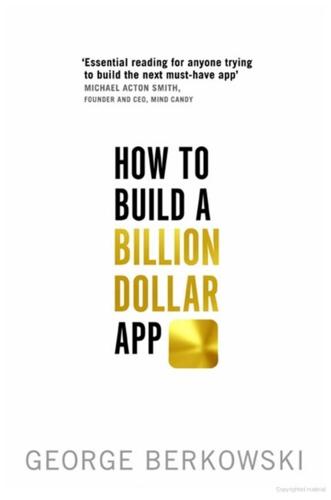
How to Build a Billion Dollar App: Discover the Secrets of the Most Successful Entrepreneurs of Our Time
by
George Berkowski
Published 3 Sep 2014
Flipboard.com, 9 December 2010, inside.flipboard.com/2010/12/09/apple-picks-flipboard-as-app-of-the-year/. 5 ‘Gartner Says Worldwide Traditional PC, Tablet, Ultramobile and Mobile Phone Shipments On Pace to Grow 7.6 Percent in 2014’, article on Gartner.com, 7 January 2014, www.gartner.com/newsroom/id/2645115. 6 ‘Android Fragmentation Visualized’, report on OpenSignal.com, August 2012, opensignal.com/reports/fragmentation.php. 7 Juli Clover, ‘iOS 7 Now on 73% of Devices, but Adoption Rates “Much Slower” Than iOS 6’, article on MacRumors.com, 18 October 2013, www.macrumors.com/2013/10/18/ios-7-now-on-73-of-devices-but-adoption-rates-much-slower-than-ios-6/. 8 ‘Android Fragmentation Visualized’, August 2012, op. cit. Chapter 8: App Version 0.1 1 Anthony Wing Kosner, ‘Jony Ives’ (No Longer So) Secret Design Weapon’, article on Forbes.com, 30 November 2013, www.forbes.com/sites/anthonykosner/2013/11/30/jony-ives-no-longer-so-secret-design-weapon/. 2 ‘SFMOMA Presents Less and More: The Design Ethos of Dieter Rams’, press release, 29 June 2011, www.sfmoma.org/about/press/press_exhibitions/releases/880. 3 Brian Suthoff, ‘First Impressions Matter!
…
Back to purity, back to simplicity. – Dieter Rams Dieter Rams is one of great pioneers of industrial design. For decades he worked at Braun and pioneered state-of-the-art radios, audio equipment, cameras and furniture. He has been exalted by many as the leader of ‘minimalist, intuitive design’. Apple’s lead designer, Jony Ive, is one of many who have been massively influenced by his style.1 Rams is celebrated for his 10 principles of good design2 – something that is critical today. Keep these principles in mind as you design your app. According to Rams good design: • Is innovative • Makes a product useful • Is aesthetic • Makes a product understandable • Is unobtrusive • Is honest • Is long-lasting • Is thorough down to the last detail • Is environmentally friendly • Has as little design as possible.

Elon Musk
by
Walter Isaacson
Published 11 Sep 2023
“The vision was that we would create designers who thought like engineers and engineers who thought like designers,” von Holzhausen says. This followed the principle that Steve Jobs and Jony Ive had instilled at Apple: design is not just about aesthetics; true industrial design must connect the looks of a product to its engineering. “In most people’s vocabularies, design means veneer,” Jobs once explained. “Nothing could be further from the meaning of design. Design is the fundamental soul of a man-made creation that ends up expressing itself in successive outer layers.” Friendly design There was another principle that came out of Apple’s design studio. When Jony Ive conceived the candy-colored, friendly iMac in 1998, he included a recessed handle.
…
In a conference room away from the other partygoers, Musk showed him pictures of the work that Fisker had done on the Model S. “That is really no good,” von Holzhausen declared. “I can make you something great.” Musk started laughing. “Yes, let’s do it,” he said, hiring von Holzhausen on the spot. They would end up becoming a team, like Steve Jobs and Jony Ive, one of the few calming and nondramatic relationships Musk would have, professionally and personally. Musk wanted the design studio to be near his cubicle at the SpaceX factory in Los Angeles, rather than at Tesla’s office in Silicon Valley, but he did not have the money to build it. So he gave von Holzhausen a corner in the rear of the rocket factory, near where the nose cones were being assembled, and erected a tent to give his team some privacy.
…
See Neuralink Hunt, William, 11 Hurley, Chad, 420 Hyperloop, 258 idiot index, 99–100, 363–65 “Importance of Being Solar, The” (Musk), 51 Innovator’s Dilemma, The (Christensen), 84 Inspiration4 mission, 383–85, 388 International Space Station astronaut transport to, 212, 225, 348–49, 441 cargo missions to, 122, 188, 189, 204, 231 Obama administration SpaceX contract, 210–12 space capsule returns from, 211, 614 SpaceX supply rockets contract, 188, 189, 204 internet. See Starlink; X.com; Zip2 Iron Man, 142 Iron Man 2, 142 Isaacman, Jared, 382, 383, 384–85, 386, 476 Ive, Jony, 197, 200 Jackson, Andrew, 6 Jobs, Steve architecture and, 337, 559 company leadership and, 63, 133 engineering integration and, 200 human-computer interfaces and, 399 Jony Ive and, 197, 200 management style, 7, 64, 114, 166, 167, 559 OCD and, 218 product launches and, 140 Roadster launch and, 143 sealed devices and, 56 simplicity and, 76 venture capitalists and, 63 Joe Rogan show, 295, 297–98 Johnsen, Bret, 363 Johnson, RJ, 370 Jones, Alex, 554 Jost, Colin, 377 Juncosa, Mark, 325 background of, 322–23 Burning Man and, 379 business principles and, 427 on cost-effectiveness, 112 Falcon 9 successes and, 209, 232–33 Model 3 production surge and, 271, 279 personality of, 323, 389, 477, 479 Bill Riley and, 327 Starlink and, 322, 323–24, 355 Starship launch and, 607, 608, 609 Starship system and, 378, 477, 478, 479 Tesla financial issues and, 180–81 Zilis and, 413 Junod, Tom, 170, 237 Jurvetson, Steve, 138, 231 Kalayjian, Nick, 282 Karate Kid, The, 360 Karpathy, Andrej, 244, 600 Kay, Alan, 399 Kennedy, John F., 207–8, 226 Kennedy, Robert, Jr., 578 Khanna, Ro, 514 Kirkhorn, Zach, 501, 502 Kissinger, Henry, 539 Kistler Aerospace, 122 Klain, Ron, 421 Kleinrock, Len, 517 Klum, Heidi, 535 Koenigsmann, Hans, 382 departure of, 385 Falcon 1 launch attempts and, 151, 154, 175 Inspiration4 mission and, 384 Kwajalein Island launch site and, 144, 147, 149 safety and, 351–52 Shotwell and, 120 Starship system and, 611–12 Kovac, Milan, 333, 396, 495, 497, 499, 500 Krebs, Andy, 358, 361, 366, 367–68, 475, 476, 478, 480 Kuehmann, Charles, 317 Kuhn, Joe, 258, 259 Kurzweil, Ray, 401 Landrieu, Mitch, 422 Lee, Bill, 173, 174, 180, 275, 443 Lee, Spike, 448 Levchin, Max EM’s reconciliation with, 87, 183–84 on EM’s sense of mission, 94 Nosek and, 423 PayPal coup and, 82, 83, 86, 87 “PayPal mafia” and, 183 PayPal merger and, 76, 77, 78, 79, 81 PayPal recoding effort and, 79–80 Licklider, J.
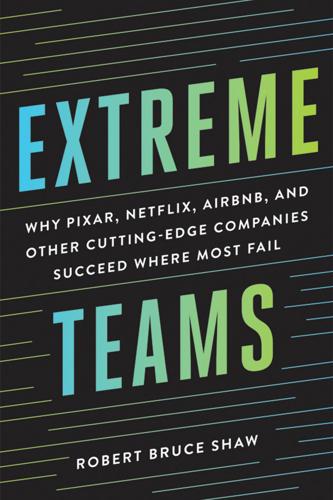
Extreme Teams: Why Pixar, Netflix, AirBnB, and Other Cutting-Edge Companies Succeed Where Most Fail
by
Robert Bruce Shaw
,
James Foster
and
Brilliance Audio
Published 14 Oct 2017
In particular, the relationships among team members either enable results when a team “gels” or, on the other extreme, hinder results when factions within the group undermine its ability to operate at a high level. Relationships, from this point of view, are a means to an end—and are not on par with the need to deliver results. The chief designer at Apple, Jony Ives, tells a story about Steve Jobs that illustrates this point.36 Jobs believed that a key to his success was staffing his teams with highly talented people. His role as a leader was then to push them to achieve more than they thought possible. At one point, Jobs was unhappy with the product that Ives and his team were developing.
…
See Hackman, Leading Teams: Setting the Stage for Great Performances (Boston: Harvard Business Press, 2002), 30. 34Amanda Little, “An Interview with Patagonia Founder Yvon Chouinard,” Grist, October 23, 2004. 35Megan Hustad, “Whole Foods’ John Mackey: Self-Awareness on Aisle 5?” Fortune, March 8, 2013. 36Ian Parker, “How an Industrial Designer Became Apple’s Greatest Product,” February 23, 2015. 37Jay Yarow, “Jony Ive: This Is the Most Important Thing I Learned from Steve Jobs,” Business Insider, October 10, 2014. 38Robert Putnam, Bowling Alone: The Collapse and Revival of American Community (New York: Simon & Schuster, 2001). 39There is a great deal of research on the impact of social cohesion on performance.

The Twittering Machine
by
Richard Seymour
Published 20 Aug 2019
Many social industry and tech executives resist their own technologies. Mark Zuckerberg’s Facebook account is run by employees. Apple’s Steve Jobs wouldn’t let his children near an iPad, while his replacement, Tim Cook, doesn’t allow his nephew to use social networking sites. Apple’s design strategist Jony Ive warns that ‘constant use’ of tech is overuse.3 As always, tech is adept at producing profitable solutions to the problems it creates. Now smartphone users can trade in their addictive devices for a range of minimalist alternatives, with the limited texting and call-making functionality of a very old mobile phone.
…
Paul Lewis, ‘ “Our minds can be hijacked”: the tech insiders who fear a smartphone dystopia’, Guardian, 6 October 2017. 2. Leah Pearlman was a user . . . Victor Luckerson, ‘The Rise of the Like Economy’, The Ringer, 15 February 2017; Julian Morgans, ‘The Inventor of the “Like” Button Wants You to Stop Worrying About Likes’, Vice, 6 July 2017. 3. Apple’s design strategist . . . Mark Sullivan, ‘Jony Ive says “constant use” of iPhone is “misuse” ’, Fast Company, 6 October 2017. 4. Yet, according to David Kirkpatrick’s history . . . David Kirkpatrick, The Facebook Effect: The Inside Story of the Company That Is Connecting the World, Simon & Schuster: New York, 2011, p. 118. 5. One of the site’s earliest users . . .

Stephen Fry in America
by
Stephen Fry
Published 1 Jan 2008
If you can overlook, that is, its habit of being destroyed by earthquakes every two hundred years. North Beach, the Golden Gate Bridge, Chinatown, the cable cars–I am happy to wander about like the most rubber-necked, wide-eyed tourist, gaping and grinning at the bumps and hills that Steve McQueen made so famous in that car chase in Bullitt. Jony Ive The first time I met this hero of the western world I was tongue-tied, so it is as well that I have got to know him better in the intervening years. At forty-one years old Jonathan Paul Ive CBE is probably the most influential designer alive. He was only thirty when he unleashed upon the world, under the aegis of the newly returned CEO, Steve Jobs, the Apple iMac, that transparent blue, all-in-one TV-shaped desktop computer that most informed people reckon revived Apple’s fortunes, saved it indeed, from going under.
…
He was only thirty when he unleashed upon the world, under the aegis of the newly returned CEO, Steve Jobs, the Apple iMac, that transparent blue, all-in-one TV-shaped desktop computer that most informed people reckon revived Apple’s fortunes, saved it indeed, from going under. There followed in bewilderingly quick succession the iPod in all its generations of Mini, Nano and Touch, new generations too of iMac, the massively influential titanium PowerBook and most recently the all-conquering iPhone. iPod talk, with its creator, Apple designer Jony Ive. We drive around San Francisco, his adopted home (Apple’s HQ is the fabled 1 Infinite Loop, Cupertino–forty-five miles to the south) and he points out his favourite landmarks. We drive to the Russian Hill District and chat on the roof of the San Francisco Art Institute. There can be few people on earth who have not seen that iconic, round-cornered white slab of a device, the classic iPod, I say to him.

Supremacy: AI, ChatGPT, and the Race That Will Change the World
by
Parmy Olson
OpenAI’s mission had been to create AGI “for the benefit of humanity,” and Toner and her fellow board members believed Altman himself was compromising that. Behind the scenes over the previous months, they’d rankled at how he seemed to be building a sprawling AI empire outside of OpenAI. He’d been talking to former Apple designer Jony Ive about starting an “iPhone of AI” and was trying to raise tens of billions of dollars from Middle Eastern sovereign wealth funds to build an AI chipmaking business. And then there was Worldcoin, a crypto-based network Altman had also founded that would give everyone in the world a digital identity by scanning their irises.
…
Chapter 15: Checkmate “The Capabilities of Multimodal AI|Gemini Demo.” Google’s YouTube channel, December 6, 2023. Dastin, Jeffrey, Krystal Hu, and Paresh Dave. “Exclusive: ChatGPT Owner OpenAI Projects $1 Billion in Revenue by 2024.” Reuters, December 15, 2022. Gurman, Mark. “Apple’s iPhone Design Chief Enlisted by Jony Ive, Sam Altman to Work on AI Devices.” Bloomberg, December 26, 2023. Hagey, Keach, Deepa Seetharaman, and Berber Jin. “Behind the Scenes of Sam Altman’s Showdown at OpenAI.” Wall Street Journal, November 22, 2023. Hawkins, Mackenzie, Edward Ludlow, Gillian Tan, and Dina Bass. “OpenAI’s Sam Altman Seeks US Blessing to Raise Billions for AI Chips.”
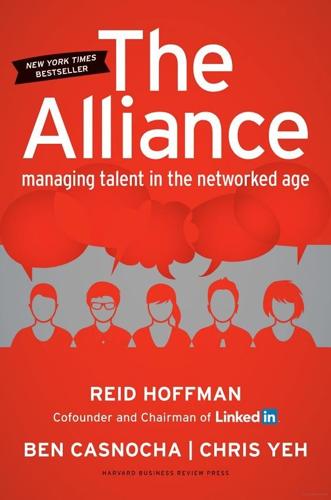
The Alliance: Managing Talent in the Networked Age
by
Reid Hoffman
,
Ben Casnocha
and
Chris Yeh
Published 15 Jan 2014
We want to help people develop different skill sets that can help them and us.” Here in Silicon Valley, Cisco’s Talent Connection program, which helps current employees find new opportunities within Cisco, increased employees’ satisfaction with career development by almost 20 percent.3 Foundational Jony Ive at Apple. Fred Smith at FedEx. Ginni Rometty at IBM. These are people whose lives are fundamentally intertwined with their companies. These are people on a Foundational tour of duty. Exceptional alignment of employer and employee is the hallmark of a Foundational tour. (We’ll discuss the concept of alignment in more detail in chapter 3.)

Valley of Genius: The Uncensored History of Silicon Valley (As Told by the Hackers, Founders, and Freaks Who Made It Boom)
by
Adam Fisher
Published 9 Jul 2018
Jon Rubinstein: The network computer evolved into the iMac, which was a very, very successful product for us. Tom Suiter: I’ll never forget the day he grabbed us and said, “I’ve got a little something I want to show you guys,” and so we leave the Mariani building and bounce across the street and go over to where Jony Ive’s studio was, and there are these things with shrouds on them and in a typical P. T. Barnum way, he pulls off the coverings and it’s the iMac in five Lifesaver color versions. Andy Grignon: That got Apple on people’s radars again, because computers at the time were boring beige boxes. Even at Apple in the midnineties we made boring beige boxes.
…
One of which was that everything we dealt with before was based on a mouse and keyboard. So we had to rethink everything. Every single part of the device had to be rethought for doing touch. So we started with a brand-new user interface, instead of something that was existing. Andy Grignon: Then product design—Jony Ive’s guys—would come out with a model and say, “We’re going to make it look like this.” “Oh, it doesn’t have any buttons? Yes, so we need to invent a keyboard? All right.We’ll just add that to the list, right?” Nitin Ganatra: One of the things that terrified me was How the heck are we going to make a virtual keyboard work anywhere near as well as a physical keyboard?
…
It wasn’t like one of those things where everybody really has their shit together. It was a really small, very eclectic group: Bob Iger was there, he spoke; Lee Clow read “The Crazy Ones”; Steve’s biological sister Mona Simpson was there; all his children were there; Laurene was there; the only Apple people I recall were Jony Ives, Eddy Cue, and Tim Cook. George Riley was kind of running the show. Larry Brilliant was there. Larry Brilliant: We read something from the Bhagavad Gita, but we’re not going to talk about that. Mike Slade: It was in the cemetery and his coffin was right there. We all formed a semicircle around the casket and then anybody who wanted to speak could speak.
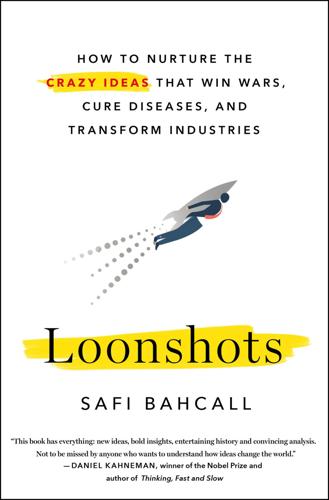
Loonshots: How to Nurture the Crazy Ideas That Win Wars, Cure Diseases, and Transform Industries
by
Safi Bahcall
Published 19 Mar 2019
Steve Wozniak, Apple’s cofounder along with Jobs, who was working on the Apple II franchise, left, along with other critical employees; the Mac launch failed commercially; Apple faced severe financial pressure; Jobs was exiled; and John Sculley took over (eventually rescuing the Mac and restoring financial stability). When Jobs returned twelve years later, he had learned to love his artists (Jony Ive) and soldiers (Tim Cook) equally. Although equal-opportunity respect is a rare skill by nature, it can be nurtured with practice (more on this in chapter 5). Manage the transfer, not the technology Bush, although a brilliant inventor and engineer, pointedly stayed out of the details of any one loonshot.
…
Just like the failure of Friendster prior to Facebook, or the failure of cholesterol-lowering drugs and diets prior to Endo’s statins, or the failure of the Comets before the Boeing 707, IBM’s failure with OS/2 had been a False Fail. In rescuing Apple, Jobs demonstrated how to escape the Moses Trap. He had learned to nurture both types of loonshots: P-type and S-type. He had separated his phases: the studio of Jony Ive, Apple’s chief product designer, who reported only to Jobs, became “as off-limits as Los Alamos during the Manhattan Project.” He had learned to love both artists and soldiers: it was Tim Cook who was groomed to succeed him as CEO. Jobs tailored the tools to the phase and balanced the tensions between new products and existing franchises in ways that have been described in many books and articles written about Apple.

The Everything Blueprint: The Microchip Design That Changed the World
by
James Ashton
Published 11 May 2023
Little did he know then that three delayed deals would spark a profit warning a few days later that sent Arm shares tumbling. The Jesus Phone The reboot of Apple began with the iMac, a futuristic, egg-shaped Macintosh computer with a ‘Bondi blue’ casing that was launched in May 1998. It was the first product to carry the imprint of Jony Ive, the British designer whose fondness for sleek aesthetics would blaze a trail through the consumer electronics world. At the turn of the millennium, Steve Jobs was thinking bigger. The success of Nokia and others in popularising mobile phones threatened the personal computer as the centrepiece of consumers’ digital lives.
…
His house on ‘Billionaires’ Row’ in the hills of San Francisco’s Pacific Heights district had one of the US’s most desirable zip codes and views across the bay to the Golden Gate Bridge. The neighbours were impressive too, including Salesforce.com co-founder Marc Benioff, Apple’s former design genius Sir Jony Ive and the best-selling novelist Danielle Steel. Huang had based himself at home during the pandemic and, sat in his swish kitchen one day during summer 2020, he received a text message from Son. ‘He texts me, “Do you want to talk?” and we got on the phone, and that was about it,’ Huang said, making light of the sales odyssey that Arm had been going through.18 Announced, oddly, on a Sunday night, 13 September, but anticipated by weeks of press leaks, Nvidia agreed to pay up to $40bn for Arm.

The Optimist: Sam Altman, OpenAI, and the Race to Invent the Future
by
Keach Hagey
Published 19 May 2025
OpenAI’s most important corporate partner, Microsoft, signed a deal to buy energy from Helion, Altman’s nuclear fusion company (pending the actual invention of sustainable energy from nuclear fusion). He was meeting with legendary iPhone designer Jony Ive about some new kind of AI device. Each of these came with a disclaimer from Altman, and over time Altman would say that projects like the chips fundraising and Jony Ive partnership were on behalf of OpenAI. But as the board read about his activities in the press it had questions. Then, one night in the summer of 2023, an OpenAI board member overheard a person at a dinner party discussing how inappropriate it was that returns from OpenAI’s Startup Fund were not going to OpenAI investors, given how the fund was able to use scarce resources such as early access to OpenAI products.
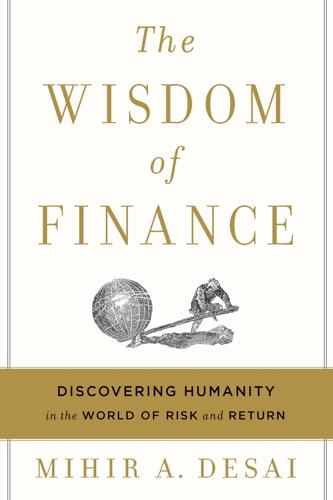
The Wisdom of Finance: Discovering Humanity in the World of Risk and Return
by
Mihir Desai
Published 22 May 2017
And those state pension funds have our savings invested in them, and we’ve appointed those pension fund managers to manage our wealth. It is a series of principal-agent relationships—we (the ultimate principal) save through pensions funds (our agents), which appoint David Einhorn (the agents of the pension funds), who monitors Tim Cook (the agent of David Einhorn), who appoints Jony Ive (Cook’s agent as Apple’s chief design officer), who appoints . . . you get the idea. Once you become attuned to the principal-agent relationship, it’s hard not to see it playing out everywhere in life. In many ways, the biggest debates today on what is wrong with capitalism are actually debates about finance and agency theory.

The Best Interface Is No Interface: The Simple Path to Brilliant Technology (Voices That Matter)
by
Golden Krishna
Published 10 Feb 2015
And just a few weeks of these open-minded observations and conversations with customers is a marvelous first step that many smart people in technology use today to create something useful. But it’s certainly not the only smart first step taken in tech today. Some start with history. Go beyond an Internet image search and—yikes—dust off old books for classic, beautiful examples where others have solved similar problems you’re trying to tackle today. Like Jony Ive did with Dieter Rams’s ideas of simplicity to inspire the forms for things like, oh, the iMac, iPhone, iPad, Apple Watch, and later versions of iOS. Quantitative insights can be fantastic as well. A smart analytics team can reveal patterns about customer behavior that may have been overlooked by everyone else in the organization.
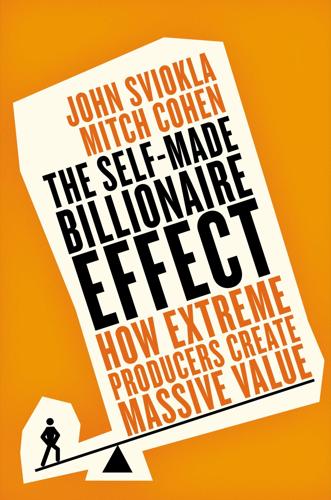
The Self-Made Billionaire Effect: How Extreme Producers Create Massive Value
by
John Sviokla
and
Mitch Cohen
Published 30 Dec 2014
As Mark Cuban attests, the complement he needed for MicroSolutions was Martin Woodall, but the Broadcast.com dream team included Todd Wagner. Bill Gates started out with Paul Allen, but he also had a long-term Producer-Performer partnership with Steve Ballmer, during which Microsoft created most of its value. Jobs and Wozniak created the iconic computer maker, but Jobs and Jony Ive, Apple’s chief designer, were the team behind the beauty and sensibility of the iMac, the iPod, the iPhone, and the iPad. John Paul DeJoria and Paul Mitchell founded John Paul Mitchell Systems, but years later DeJoria started another venture with his friend Martin Crowley, a talented architect who went bankrupt trying to make a business designing buildings.8 DeJoria pointed him in a different direction and set him up as an architecture buyer supplying materials from Mexico for high-end renovations.
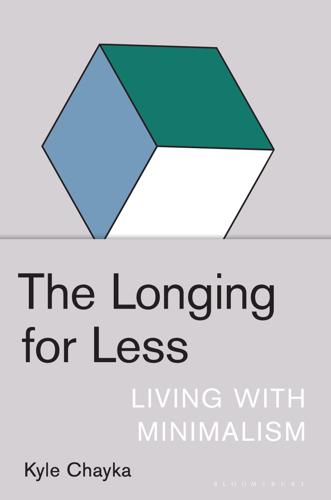
The Longing for Less: Living With Minimalism
by
Kyle Chayka
Published 21 Jan 2020
In the newest Apple headquarters, a perfect circle that Jobs designed with the architect Norman Foster, many of the internal walls are glass. The design might look more immaterial, but employees kept bumping into the glass and hurting themselves until they appended sticky notes to the transparent barriers, ruining the style but preventing injury. Apple devices have gradually simplified in appearance over time under designer Jony Ive, who joined the company in 1992, making them synonymous with minimalism. The 1984 Macintosh 128K was white and boxy with an inset nine-inch screen and fans with visible air slots like gills—inelegant, but its shape revealed the structure of what made it work, form giving way to function. It would count as a success for Sullivan.

Evil by Design: Interaction Design to Lead Us Into Temptation
by
Chris Nodder
Published 4 Jun 2013
The newer influx of Apple users may have diluted the original fervor of Mac devotees, but it’s still possible to see rationalization at work just by starting a discussion of the relative value-per-dollar of Apple computers versus generic PCs. 3. Manufacture source credibility and sincerity. Steve Jobs, the now-deceased father of Apple, has been replaced by head designer Jony Ive as the spiritual leader of the Apple clan. 4. Establish a granfalloon. Enter any Apple store to see ritual, symbolism, and feelings at work creating a feeling of belonging for the in-group of Apple users. Door greeters might as well be saying, “Welcome home.” 5. Use self-generated persuasion. Apple fans are the company’s best salespeople.
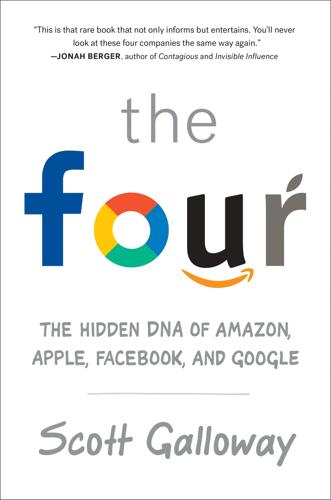
The Four: How Amazon, Apple, Facebook, and Google Divided and Conquered the World
by
Scott Galloway
Published 2 Oct 2017
Apple not only transitioned from one of the greatest visionaries to one of the greatest operators—it has been able to extend its life by transitioning to a luxury brand. How? Apple recognized that the CEO after Steve Jobs needed to be an operator who understood how to scale the firm. If Apple’s board had wanted a visionary, it would have made Jony Ive CEO. Vision(less) I’d argue Apple lacks a vision; however, it still thrives, as making the iPhone bigger and then smaller again is genius in its simplicity (let’s take the best bread in the world and slice it a bunch of ways). The firm also has bought more time as it’s realized it has the brand, and assets, to make expensive (both capital and time) investments in becoming a luxury brand that other tech firms cannot.
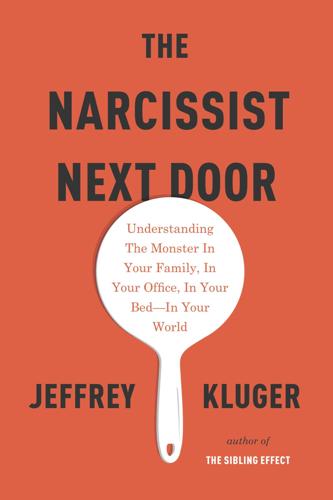
The Narcissist Next Door
by
Jeffrey Kluger
Published 25 Aug 2014
He bore grudges (one of the only complaints about the original iPad was that it wouldn’t run Adobe Flash Player, a senseless omission, except that Jobs resented Adobe for once refusing to write software for the iMac); he behaved pettily, once storming out of a five-star hotel in London, calling close friend and Apple designer Jony Ive, who was staying in the hotel, too, and had gone to pains to make the booking, with the petulant announcement “I hate my room. It’s a piece of shit, let’s go.” He even exhibited a sadistic streak, once asking a job candidate, “How old were you when you lost your virginity? How many times have you taken LSD?”

Equal Is Unfair: America's Misguided Fight Against Income Inequality
by
Don Watkins
and
Yaron Brook
Published 28 Mar 2016
It includes pilots, restaurant hostesses, car salesmen, coal miners, construction workers, TV writers, and accountants, among thousands of other examples. It stretches from unskilled workers performing manual labor to roles that require every bit as much thought as that required of a company’s leaders. At Apple, for instance, one of the key workers was Jony Ive, head of the design team. By the time Jobs returned in 1997, Ive was ready to quit, frustrated that Apple had long ago abandoned its commitment to great products. Jobs assured him it was a new day. Jobs would later describe Ive as “a spiritual partner.” Both men shared a deep commitment to creating products that were simple and elegant, with thought given to every aspect of their design.

Green Swans: The Coming Boom in Regenerative Capitalism
by
John Elkington
Published 6 Apr 2020
Of course I am delighted to see growing numbers of businesses embracing this mind-set, whether by becoming B Corporations or producing integrated reports covering all three dimensions of value creation—or destruction. Take the case of Apple, a company whose products I have used since the very first Macs, with Green Swans typed on one of the latest MacBooks. But that did not stop me on November 15, 2013, from asking Apple design guru Sir Jony Ive a challenging question about the working conditions at the company’s Chinese suppliers, particularly Foxconn. This was during a session at a Generation Investment Management event, with former American vice-president Al Gore in the chair. Ive became quite agitated, insisting there were no problems and that he had even slept in the worker dormitories at Foxconn: I left thinking there was more to this than met the eye.

My Friend Anna: The True Story of a Fake Heiress
by
Rachel Deloache Williams
Published 15 Jul 2019
I circled the room, scanning faces and nudging Justin when I saw a moment requiring a shot. The space became a dreamscape of celebrities—Mick Jagger, Scarlett Johansson, Matt Damon, Mary J. Blige, Tom Ford, Elon Musk, Jackie Chan—many of whom mingled in unexpected groupings, like Amy Adams with Vin Diesel, Pharrell Williams with Charlize Theron and Salma Hayek, Jony Ive with Katy Perry. By two a.m., the party was winding down—here and there a few people still lingered, clutching their Oscars, riding the jubilant wave of a night’s victory all the way into morning. When the room was nearly empty, I took off my shoes and walked barefoot to the car service line. Back at the hotel, I fell immediately into bed, and woke up hours later in a mess of bobby pins and fake eyelashes
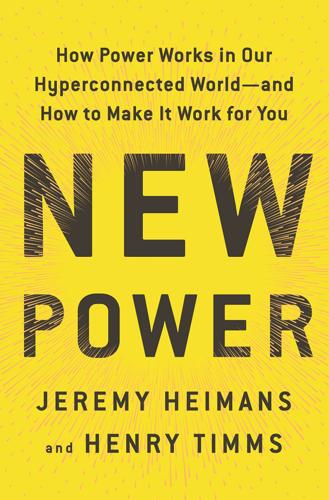
New Power: How Power Works in Our Hyperconnected World--And How to Make It Work for You
by
Jeremy Heimans
and
Henry Timms
Published 2 Apr 2018
Clearly Apple is a masterful technology business, but that doesn’t make it a new power company. In fact, it deploys an old power model and typically defaults to old power values. It provides highly desirable products to a fanatical consumer base, and does so with a “we know best” ethos. Its product designers in Cupertino, led by the mythical Jony Ive, figure out what we want before we want it and then present their creations to us. Our only job is to consume (even when they decide we no longer need our headphone jacks). There are “open” flanks in Apple’s business model, like its app store, but even that is subject to onerous restrictions and centralized control (and extractive behavior) by Apple.
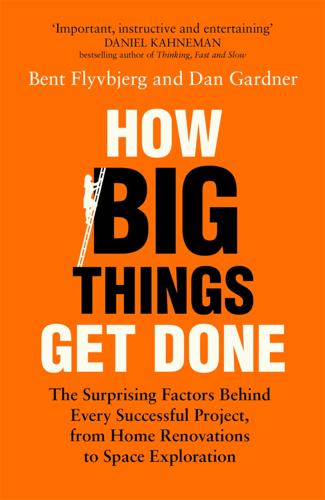
How Big Things Get Done: The Surprising Factors Behind Every Successful Project, From Home Renovations to Space Exploration
by
Bent Flyvbjerg
and
Dan Gardner
Published 16 Feb 2023
“We want to demonstrate that modular building can do more than just harness the efficiencies of the factory,” Forster said. “It can produce a graceful and iconic tower.”16 Even further removed from cheap and ugly is Apple’s dazzling, ethereal headquarters in Cupertino, California, designed by Norman Foster, Steve Jobs, and Jony Ive, where modularity played a major role, too. As conceived by Jobs, “This would be a workplace where people were open to each other and open to nature, and the key to that would be modular sections, known as pods, for work or collaboration,” the journalist Steven Levy summarized. “Jobs’ idea was to repeat those pods over and over: pod for office work, pod for teamwork, pod for socializing, like a piano roll playing a Philip Glass composition.”17 That extended to how the building was put together.
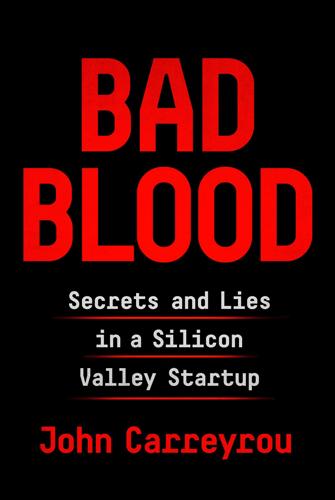
Bad Blood: Secrets and Lies in a Silicon Valley Startup
by
John Carreyrou
Published 20 May 2018
The case, she decreed, should have two colors separated by a diagonal cut, like the original iMac. But unlike that first iMac, it couldn’t be translucent. It had to hide the robotic arm and the rest of the Edison’s innards. She’d contracted out the case’s design to Yves Béhar, the Swiss-born industrial designer whose reputation in the Valley was second only to Apple’s Jony Ive. Béhar came up with an elegant black-and-white design that proved difficult to build. Tony Nugent and Dave Nelson spent countless hours molding sheet metal in an attempt to get it right. The case wouldn’t conceal the loud noises the robotic arm made, but Ana was satisfied that it would at least make the device presentable when Elizabeth took it out on demos.

Empire of the Sum: The Rise and Reign of the Pocket Calculator
by
Keith Houston
Published 22 Aug 2023
It weighed almost ten thousand pounds and comprised more than three-quarters of a million parts.49 An IBM brochure published the following year, after the “Harvard Mark I” had been unveiled to considerable fanfare, tried gamely to paint the machine as “of light weight, trim appearance,” only to clarify, in the next clause, that it measured “51 feet long and 8 feet high, bearing an interlocking panel of small gears, counters, switches, and control circuits.”50 Even a sleek, steel-and-glass enclosure designed by Norman Bel Geddes, the Jony Ive of his day, could not disguise the ASCC’s bulk.51 Aiken himself was dismissive of this $50,000 sop to aesthetics, reasoning that he would rather have had another $50,000 worth of computing power instead.52 Almost immediately, the U.S. Navy requisitioned the ASCC and put Aiken, a Navy reservist, in charge of it.53 The machine spent the war computing gunnery tables and optimizing ship designs, and may even have simulated America’s first atomic bomb.54 Among the naval personnel who ran the ASCC during this time was a lieutenant named Grace Hopper, who showed both an affinity for working with the machine and a sympathy for its human wranglers.

Them and Us: How Immigrants and Locals Can Thrive Together
by
Philippe Legrain
Published 14 Oct 2020
Such virtuous circles are what make open cities and regions thrive. In Silicon Valley, the home of Apple, Google, Facebook and so many other companies that epitomise America’s technological prowess, six in ten highly skilled technology workers are foreign-born.12 Apple’s iconic iPhone was designed by a Brit, Jony Ive. Hugo Barra, who led Google’s Android mobile phone operating system division and now runs Facebook’s Oculus virtual reality division, is Brazilian. Ajay Bhatt, the chief technologist at chipmaker Intel and co-inventor of USB (Universal Serial Bus, a standard computer interface), was born in India.
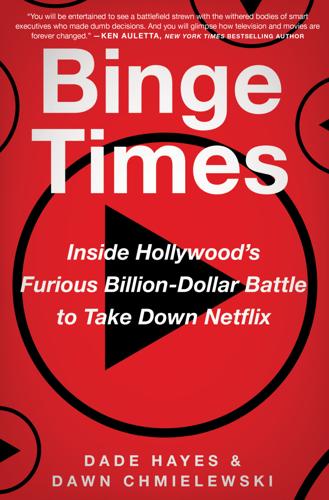
Binge Times: Inside Hollywood's Furious Billion-Dollar Battle to Take Down Netflix
by
Dade Hayes
and
Dawn Chmielewski
Published 18 Apr 2022
Apple at that time was like, ‘We’re only going to do two, tops, of anything.’” After Jobs’s death from complications of pancreatic cancer in October 2011, CEO Tim Cook’s executive staff—software vice president Craig Federighi, operating systems guru Scott Forstall, software and services head Eddy Cue, and design chief Jony Ive, among others—debated the fate of an Apple-branded television. Cue questioned how the company could sell a $7,000 device and make any profit on high-end screens that delivered low margins. Cook wondered about how Apple might build a business around a piece of glass in the living room. It didn’t fit with CEO Tim Cook’s vision for building out Apple’s ecosystem.

Visual Thinking: The Hidden Gifts of People Who Think in Pictures, Patterns, and Abstractions
by
Temple Grandin, Ph.d.
Published 11 Oct 2022
Unsurprisingly, Jobs and Wozniak split after ten years. Apple went on to introduce computers that users gush over and iPhones they are glued to. Product loyalty is so high that people wait in long lines whenever a new version of the phone is introduced. What got the company there was a new partnership, between Jobs and designer Jony Ive, who became senior vice president of design in 1997. Isaacson writes, “In Ive, Jobs met his soul mate in the quest for true rather than surface simplicity.” Jobs told his biographer, “If I had a spiritual partner at Apple, it’s Jony. Jony and I think up most of the products together and then pull others in and say, ‘Hey, what do you think about this?’
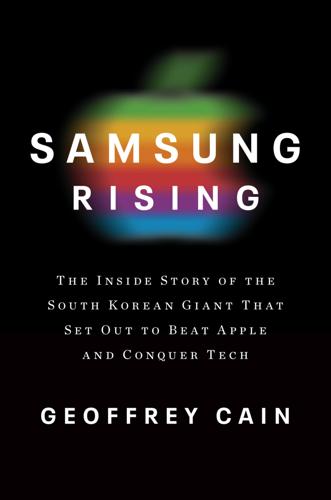
Samsung Rising: The Inside Story of the South Korean Giant That Set Out to Beat Apple and Conquer Tech
by
Geoffrey Cain
Published 15 Mar 2020
“The request puzzled me. Maybe they wanted corporate training,” Bruce told me. Gordon Bruce was a master designer, a protégé of the descendants of the renowned school of Bauhaus designers, the German movement that unified arts, craft, and technology with its simplicity, and that influenced Steve Jobs and Jony Ive, among others. Gordon had spent years creating IBM’s famed Watson Center, along with sleek products and buildings for Siemens and Mobil Oil. The following week he saw four limousines pull up outside. Gordon recalled, “Seventeen executives and designers disembarked; I counted them.” The employees acted with all the deference and discipline of a secret service unit.
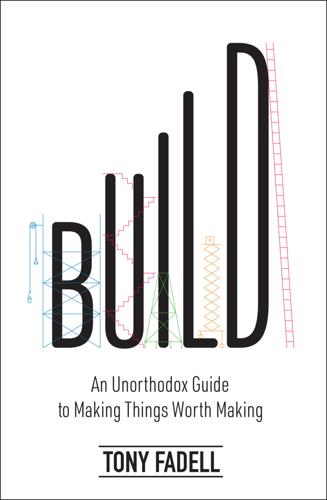
Build: An Unorthodox Guide to Making Things Worth Making
by
Tony Fadell
Published 2 May 2022
Designing isn’t something in your DNA that you’re simply born with—it’s something you learn. You can bring in coaches and teachers, classes and books to help get everyone into the right mindset. You can do it together. Even the greatest designers in the world can’t do it alone. Most people look at Apple design and say: this is the work of Steve Jobs. This is the work of Jony Ive. But that’s not remotely true. It’s never just one or two people pouring out their genius into a sketchbook, then handing it to some lowly employees to execute. Thousands upon thousands of people design for Apple—and it’s those teams that come together and create something truly unique and wonderful.

Gambling Man
by
Lionel Barber
Published 3 Oct 2024
Once a mass-production system is established, the AI chip business could be spun off, realizing billions of dollars of value to its parent SoftBank. Moreover, in September 2023, the Financial Times reported he was ready to put up $1bn to develop ‘the iPhone of artificial intelligence’, in partnership with Sam Altman and the former top Apple designer Jony Ive. This would be the first consumer device of the AI age, a landmark product to rival the smartphone. Even if Masa has often sailed close to the wind, rumours of SoftBank going bust were always exaggerated. In Japan, it is probably too big to fail, its fate too intertwined with the Japanese financial system.

Fire in the Valley: The Birth and Death of the Personal Computer
by
Michael Swaine
and
Paul Freiberger
Published 19 Oct 2014
And it took time: it was three years before what was called OS X finally came out. Meanwhile the hardware line was also being revamped. Conceding that personal computers had become commodities, Jobs embraced that model and used commodity features to sell computers. The iMac and the new desktop Mac computers that came out in 1998 and 1999, designed by Jony Ive, brought color and a sense of style to computers to a degree that had never been attempted before. The market ate them up. The iMac not only sold well; it became the best-selling computer on the market for several months running. Apple began making consistent profits again, and analysts pronounced that the slide had been halted and Apple was a good investment once more.

Coders: The Making of a New Tribe and the Remaking of the World
by
Clive Thompson
Published 26 Mar 2019
This type of thing, Houston told me, is precisely the punch-above-your-weight creativity he tries to hire. Get one of them, and you can launch ideas that ten others won’t. “No matter how long I sat in a room and tried to compose a symphony, I couldn’t,” he says. “You can have ten or a hundred designers,” he concludes, “and you won’t have one Jony Ive.” It’s not hard to understand why so many coders love the idea that programming is a world of pure willpower, raw talent, and 10X meritocracy. On the sheer level of everyday coding, it can certainly feel true. One cannot bullshit the computer, or bluster through a failed code test. “You can’t argue with a root shell,” as programmer Meredith L.
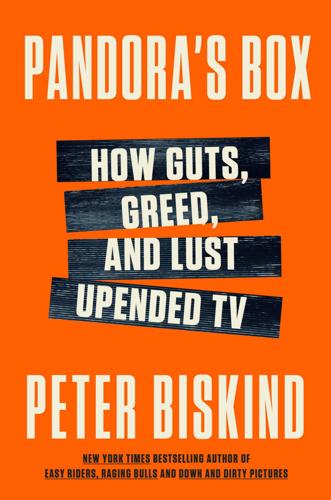
Pandora's Box: How Guts, Guile, and Greed Upended TV
by
Peter Biskind
Published 6 Nov 2023
Initially, one idea was an app that would make Apple TV+ programming free to everyone who owned an iPhone or an iPad. But kids of all ages used those devices, and they couldn’t be exposed to jokes about vaginal hygiene. Apple was best known for its hardware, its sleekly engineered iPhones and MacBooks, and there lay the rub. Its brand is not to sully the brand, scuff the silky sheen of the devices designed by Jony Ive. As The Ankler put it, the attitude was, “Netflix is just soooo Android.”15 Apple’s slogan used to be, “Think different.” So far as its streamer went, its slogan seemed to be, “Think alike.” Whereas Netflix told Jenji Kohan, according to her, “We don’t know how to do it. Show us,” Apple’s attitude seemed to be, “We do know how to do it.
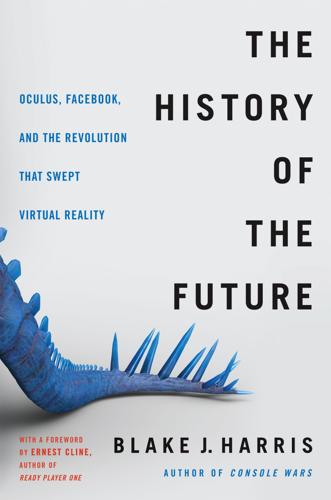
The History of the Future: Oculus, Facebook, and the Revolution That Swept Virtual Reality
by
Blake J. Harris
Published 19 Feb 2019
So it surprised the team when Iribe dropped in to suggest that “my current feeling is that the two controllers really should be symmetric and work in the left or right hand the same.” After receiving swift rebuttals from Patel (“Definitely not”) and Luckey (“The comfort will be subpar”), Iribe explained his reasoning with a line that neither of them would ever forget, “Jobs would ship ONE magic wand.” “Jobs was smart,” Luckey replied, “but it took a shouting match with Jony Ives to convince him into allowing native apps on the iPhone. He sometimes valued form over function, something we cannot afford to do. We need a great VR controller, not a cool-looking one.” Over the next few weeks, Luckey and Patel were able to get Iribe on board with their way of thinking with regards to the Virtuflexitron 3000—culminating in a September 3 email where Iribe told Luckey “this should be your sole mission in life.”

Future Crimes: Everything Is Connected, Everyone Is Vulnerable and What We Can Do About It
by
Marc Goodman
Published 24 Feb 2015
Not only are these tools functional, but they are beautiful, created by people who had a close and deep understanding of their customers and their needs. When one watched Steve Jobs onstage describe his latest products, there was no doubt that each and every one was imbued with the love of its creators. So where’s the Steve Jobs of security? What might Apple’s chief designer, Jony Ive, bring to the problem of our growing cyber insecurity? What would his firewall or antivirus program look like? Thus far, we have no idea, and that is a huge problem. It is a problem because when security features are not designed well, people simply don’t use them. Moreover, poor design can lead the human users down pathways that actually make them less secure.

Facebook: The Inside Story
by
Steven Levy
Published 25 Feb 2020
When Facebookers asked about the rumors, the company denied the truth. “It was the first time I recall Facebook lying internally,” says Ezra Callahan. According to a member of the team, Palihapitiya had an obsession with Steve Jobs and wanted to surpass him—destroy him—by building an even more beautiful phone. Palihapitiya’s equivalent of Jony Ive, Jobs’s design ace, was Yves Béhar, a much-admired Silicon Valley designer, who contracted to create the look of the hardware. Béhar sketched out a sleek device with an unusual groove in the curved surface, where one could scroll using a thumb. To provide the microprocessor, Facebook hooked up with a logical partner: Intel.

The Stack: On Software and Sovereignty
by
Benjamin H. Bratton
Published 19 Feb 2016
Apple's initial forays into massive User-centric Cloud services have a spotty track record (think MobileMe), while its audience-centric Cloud services (such as iTunes) bend whole industries toward them and generate fabulous profits. Still, it is at the level of the operating system that Apple's model platform logic coheres, and it is through premium hardware that it is guaranteed. As usually credited to Jony Ive's talent and Steve Jobs's perfectionism, Apple's physical objects ground the Cloud as something you can and want to touch and accompany you. This “design” adds dramatically to profit margin per device and underpins other channels of involvement and lock-in, pushing User experience of The Stack toward dictates of affect, flattening and cajoling the megastructure to “just work.”

Palo Alto: A History of California, Capitalism, and the World
by
Malcolm Harris
Published 14 Feb 2023
Demos like Macworld 2007 gave Apple fans an inside look at the product, somewhere between the regular public sales pitch and an internal company celebration. This fits with the outsized role that devotees play in Apple’s success as well as the curious parasocial relationship these super-users have with the computer brand. Jobs introduced the supporting cast: Apple designer extraordinaire Jony Ive, Google and Yahoo! CEOs Eric Schmidt and Jerry Yang, as well as the head of exclusive wireless partner (and recent AT&T acquisition) Cingular. Tim Cook got a shoutout during a display of the “visual voicemail” technology, but there was no mention of Foxconn or the nation of China at all. Terry Gou had as much right to stand on that stage as anyone, but there’s no sign that the Foxconn founder attended the event, though his company had won the contract to be the iPhone’s sole assembler.